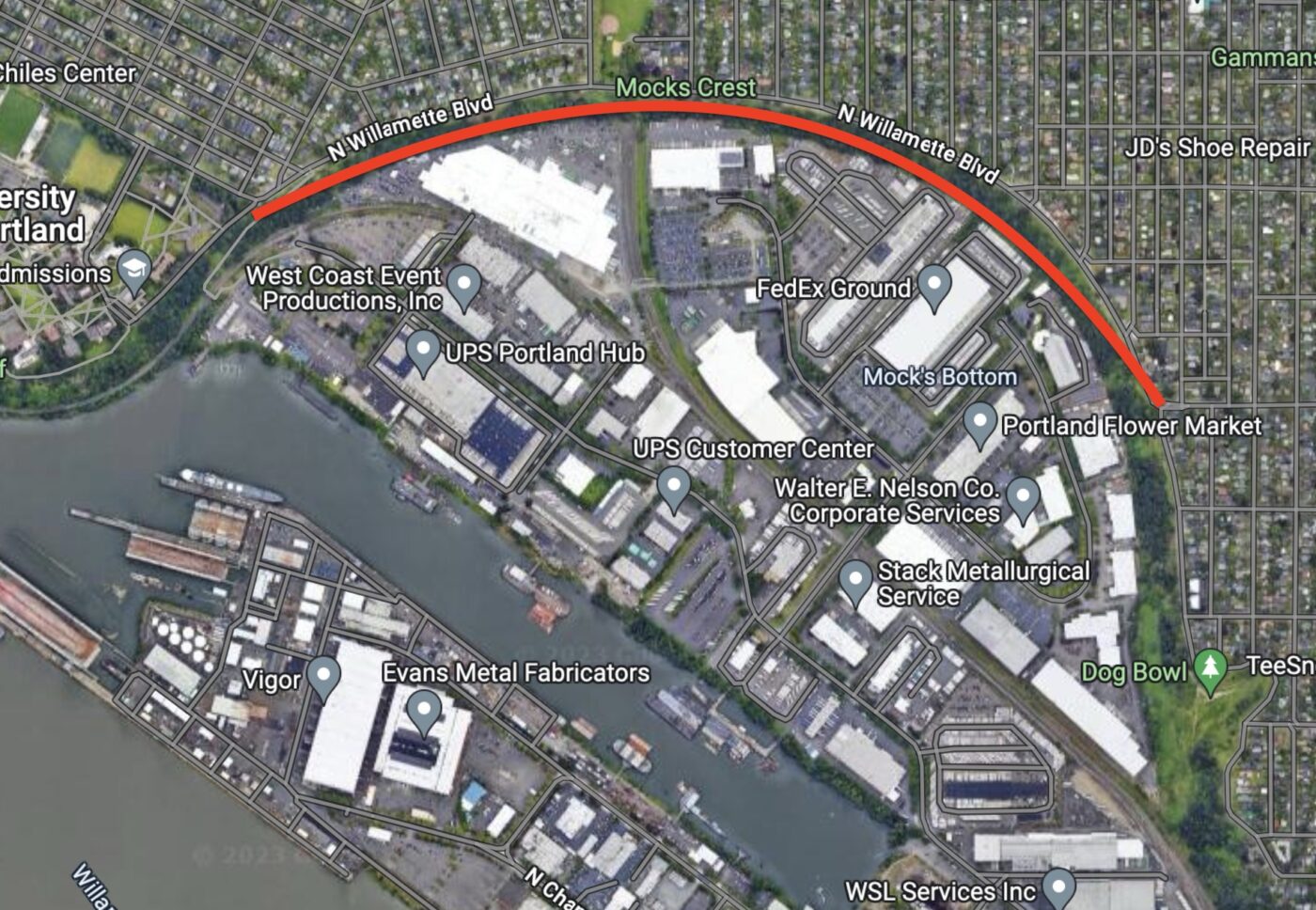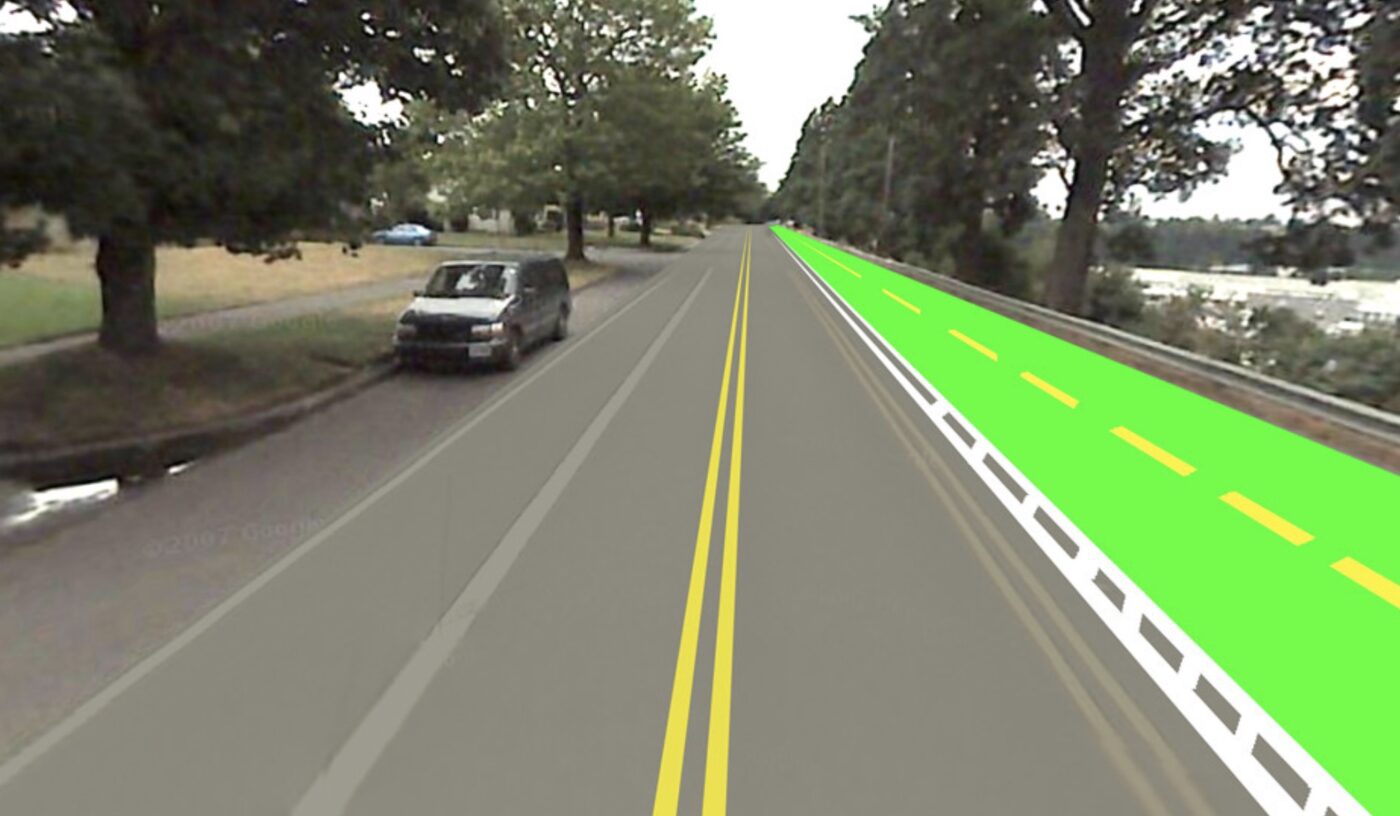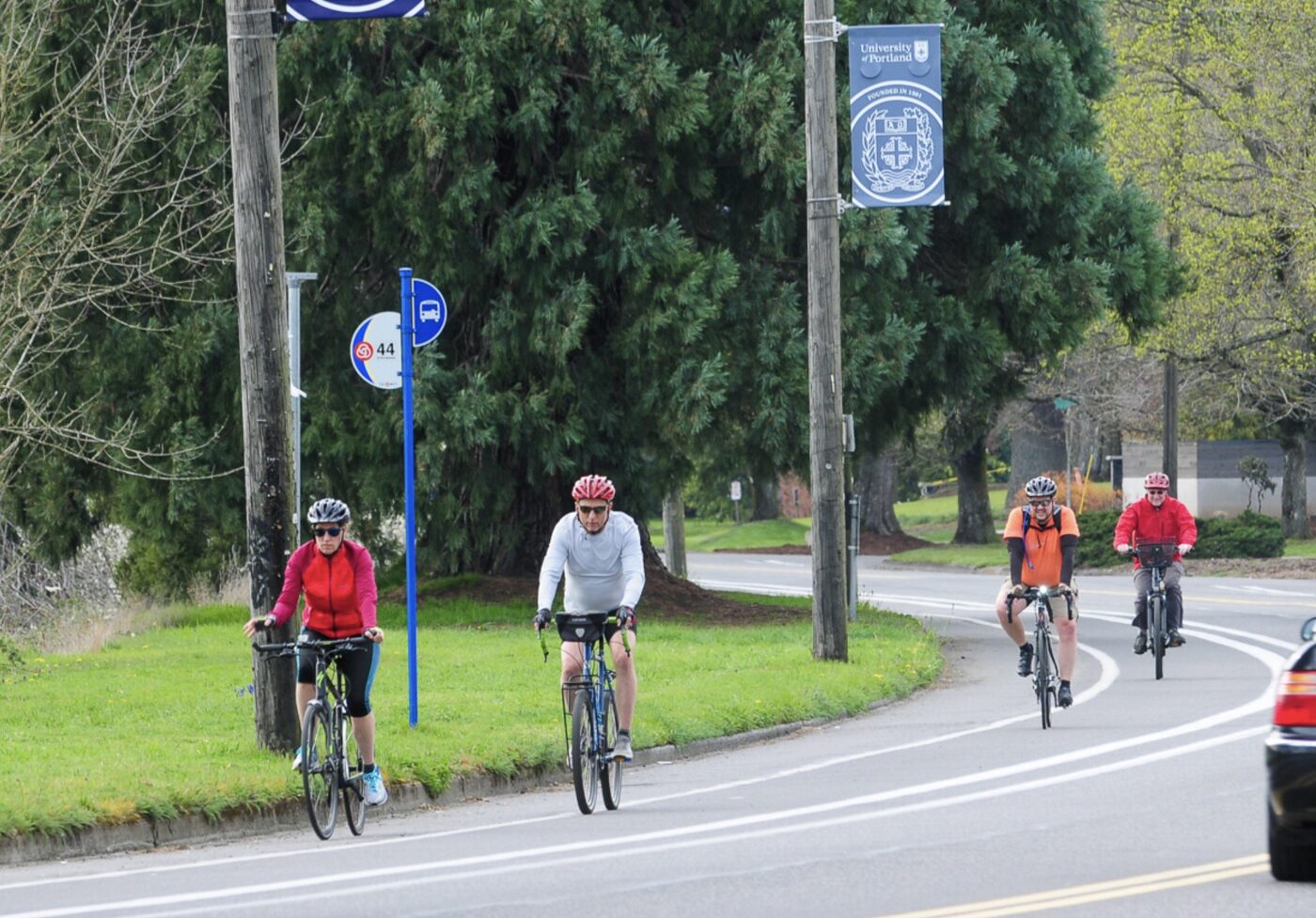If you held out hope for a two-way, off-street path on the bluff side of North Willamette Blvd as part of its upcoming major redesign, I have some bad news.
The Portland Bureau of Transportation has official put that idea to bed. Sometime in the past few weeks, PBOT uploaded a two-page document to the N Willamette Boulevard Active Transportation Corridor Project website that lays out their rationale for abandoning the bi-directional bike lane idea once and for all.
Before I get into that, here’s some context on what I’m talking about…


As I shared in September, PBOT has reached the 30% design milestone on this $6.1 million, federally funded project that will add protected bike lanes, floating bus islands, and much more to a three-mile stretch of N Willamette Blvd from N Rosa Parks Way (in Arbor Lodge) to N Richmond (in St. Johns).
A key section of the route between Rosa Parks Way and University of Portland goes along a bluff overlooking Swan Island. Willamette Blvd is relatively wide in this section and the additional potential right-of-way on the bluff on the south side of the street was alluring enough for some to consider using it for a bi-directional bikeway.
One BikePortland reader even created a mock-up (above) to illustrate his “pipe dream” and got a bit of support for the idea in the comments. One of the main advantages of a two-way facility is that it would be unimpeded by turning drivers or cross-traffic (not to mention the nice views of the river and beyond!).
PBOT was intrigued enough to study the concept more closely. However, in their newly-shared document they outline five reasons why the two-way bikeway, “does not appear to be feasible or desirable.”
PBOT says given the instability of the soil on the bluff and presence of large Sequoia trees, the bikeway would need to be in the main roadway “competing for limited space.” (Note: The current and planned cross-section has two standard lanes and two bike-only lanes.)
And while the lack of cross-traffic has appeal, PBOT points out that the lack of destinations on the bluff side means anyone biking in it would inevitably have to leave it. This would, “Add delays and conflicts compared to [standard] directional facilities,” PBOT says.
Going back to the road width issue, PBOT says there just isn’t enough room for a two-way bikeway and a northwestbound bike lane. “This means that westbound bicyclists on Rosa Parks would have to cross to the south side of Willamette Blvd to enter the two-way bikeway, then would have to cross again to the north side on the other side of the bluff, adding delays, conflicts, and out-of-direction travel to their trips,” the document states.
“Unique design challenges” presented by a two-way facility is another reason PBOT doesn’t like it. They say it’s much easier to deal with things like bus stops when there’s just one direction of travel versus two.
A two-way bikeway on the bluff would also throw a curveball at road users, since it would be inconsistent with the design of rest of the corridor, PBOT says. They prefer to keep designs consistent and that once built, the new protected bike lane on Willamette Blvd will, “most likely Portland’s longest continuous protected bike lanes to date.”
In the end, while we won’t get the off-street path with-a-view experience some folks hoped for, there’s plenty more to be excited about with this project. Learn more about the project here.



